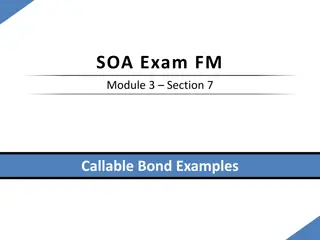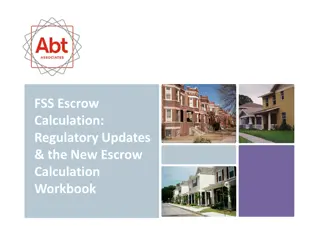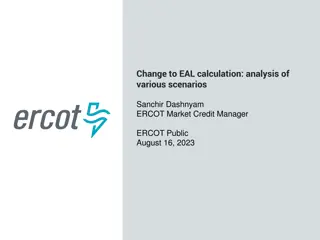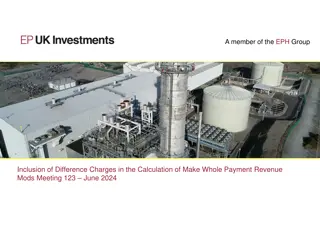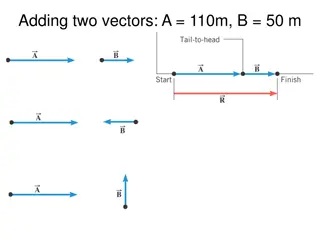
DisplayPort Bandwidth Considerations for Efficient Video Data Transport
Explore the factors that determine the number of lanes and data rate required to transport video data over DisplayPort main link efficiently, considering resolutions, refresh rates, bit-per-color, and more.
Download Presentation

Please find below an Image/Link to download the presentation.
The content on the website is provided AS IS for your information and personal use only. It may not be sold, licensed, or shared on other websites without obtaining consent from the author. If you encounter any issues during the download, it is possible that the publisher has removed the file from their server.
You are allowed to download the files provided on this website for personal or commercial use, subject to the condition that they are used lawfully. All files are the property of their respective owners.
The content on the website is provided AS IS for your information and personal use only. It may not be sold, licensed, or shared on other websites without obtaining consent from the author.
E N D
Presentation Transcript
Link Bandwidth Consideration (1/8) The number of xcvr lanes and data rate required to transport the video data across the DisplayPort main link depends on the following factor: Resolution of the image Refresh rate Bit-per-color Number of video stream (for Multi-stream Transport) The video stream clock frequency (tx_vid_clk or rx_vid_clk) must be higher than the link symbol clock frequency (tx_ss_clk or rx_ss_clk) to prevent link bandwidth oversubscription The following examples determines: The number of lanes required The data rate The minimum video stream clock (pixel clock) frequency Symbol/clock and pixel/clock settings of the DisplayPort IP core Intel Confidential Programmable Solutions Group 2
Link Bandwidth Consideration (2/8) The resolutions of the image are standardized by various video timing standard defined by VESA (CVT) & CEA Source: Wikipedia Intel Confidential Programmable Solutions Group 3
Link Bandwidth Consideration (3/8) Display resolution consists of the number of pixels in active video and blanking period Video & Image Processing Suite User Guide v16.0 Intel Confidential Programmable Solutions Group 4
Link Bandwidth Consideration (4/8) Single Stream Transport Example: Video active resolution = 1920 x 1080 pixels Horizontal blanking (H blanking) = 280 pixels Vertical blanking (V blanking) = 45 pixels Refresh rate = 60Hz/frame Bit-per-color (bpc) = 8 bit-per-pixel = 8 x 3 = 24 (3 colors: red, green, blue) Standard blanking ANSI/CEA Standard CEA-861-F Intel Confidential Programmable Solutions Group 5
Link Bandwidth Consideration (5/8) Single Stream Transport Example: Total horizontal pixel (H total) = H active + H blanking Total vertical pixel (V total) = V active + V blanking Total pixels per frame per second = H total x V total x refresh rate = 2200 x 1125 x 60 = 148,500,000 pixels/s Total bits per frame per second = total pixels per frame per second x bit-per-pixel = 148,500,000 x 24 = 3,564,000,000 bits/s = 3.564Gbps With 8b/10b encoding/decoding overhead, total bits/s across main link = 3.564 x 10/8 = 4.455Gbps = 1920 + 280 = 2200 pixels = 1080 + 45 = 1125 pixels Intel Confidential Programmable Solutions Group 6
Link Bandwidth Consideration (6/8) Single Stream Transport Example: The total bandwidth of xcvr lanes required MUST be equal or higher total of bits/s across the link. Possible main link configuration: 4 x 1.62Gbps (RBR) = 6.48Gbps 2 x 2.7Gbps (HBR) = 5.4Gbps 1 x 5.4Gbps (HBR2) The stream clock frequency (f_strm_clk) = 148.5MHz The minimal local pixel clock frequency (f_vid_clk) = f_strm_clk/pixels_per_clock Pixels_per_clock = Pixel input/output mode setting (1, 2, 4) If f_vid_clk frequency is higher (e.g. 160MHz) than 148.5MHz, the video data valid signal is de- asserted when there is no active video in the stream Refer to next slide for timing diagram If f_vid_clk is the same as 148.5MHz, the video data valid signal is asserted in every clock cycle Link to Video PLL slide Intel Confidential Programmable Solutions Group 7
Link Bandwidth Consideration (7/8) The CVI IP cores only read the vid_data, vid_de, vid_h_sync, vid_v_sync, and vid_f signals when vid_datavalid is 1. This allows the CVI IP cores to support oversampling where the video clock is running at a higher rate than the pixel clock Video & Image Processing Suite User Guide v16.0 Intel Confidential Programmable Solutions Group 8
Link Bandwidth Consideration (8/8) Multi-Stream Transport Example Number of stream = 4 Video stream details Resolution of each stream = 1920 x 1080 Refresh rate of each stream = 60Hz Bit-per-color of each stream = 10 (30-bit per pixel) Total bits per frame per second with 8b/10b encoding overhead = 148,500,000 x 30 x 4 x 10/8 = 22,275,000,000 = 22.275Gbps Data rate per lane = 22.275/4 = 5.56875Gbps > 5.4Gbps Options to overcome bandwidth limitation: Reduce refresh rate to 30Hz Data rate/lane = 2.784375Gbps Reduce bit-per-color to 8 bpc Data rate/lane = 17.82Gbps/4 = 4.455Gbps Use reduce blanking (CVT-R) with the same resolution Reduce the resolution Not supported! Intel Confidential Programmable Solutions Group 9



